Have you been out kayaking and came home absolutely exhausted? With sore arms and core and needing to nap a whole day afterwards?
Well, that’s no surprise! That’s because kayaking is a great way to burn calories: it works the muscles in your arms, shoulders, back, and abs. In this article, I’ll answer how many calories your burn while kayaking, what are some good exercises to prepare you for kayaking, and much more. Let’s hop in the water now 😀
How Many Calories Do You Burn While Kayaking?
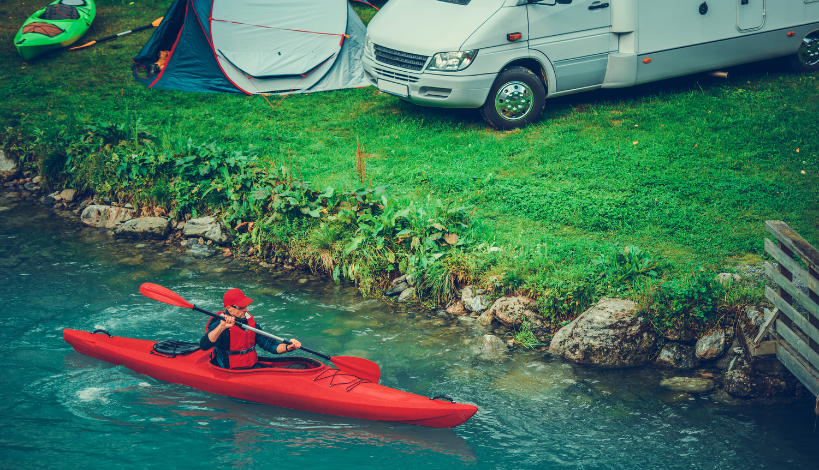
According to the American Council on Exercise, a 125-pound person can burn around 283 calories in an hour of kayaking, while a 155-pound person can burn around 352 calories in the same amount of time. A 185-pound person can burn around 421 calories in an hour of kayaking. It’s safe to assume that you can burn anywhere from 250-500 calories an hour!
The number of calories burned while kayaking does depend on several factors of course, including your weight, the intensity of your paddling, and the duration of your kayaking session.
How Does Kayaking Help You Stay Fit?
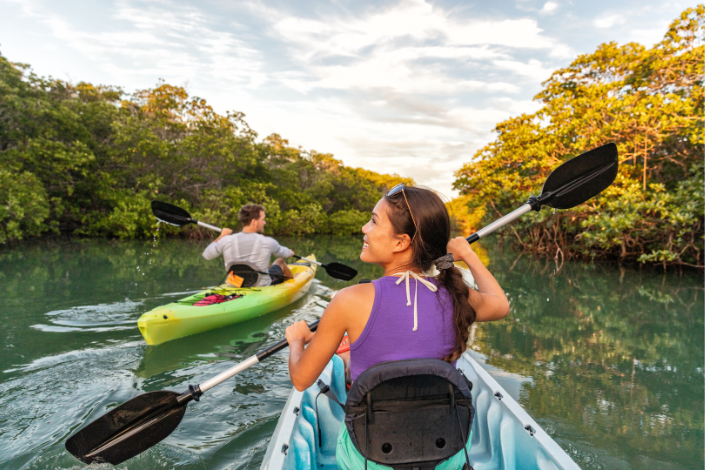
Kayaking is a low-impact activity that provides a full-body workout.
It requires the use of your arms, shoulders, back, and abs to paddle through the water. This can help you build strength and endurance in these muscle groups and should leave you sore unless you kayak often and have been doing so for years!
Kayaking is also a great way to increase your heart rate and improve your cardiovascular fitness. If you paddle at a higher intensity, you can burn more calories and get an even better workout.
If you want to challenge yourself and bur more calories whilst kayaking, then consider increasing the intensity of your workouts. This can involve paddling at a faster pace, paddling against the current, or trying a more challenging route.
You can also incorporate interval training into your kayaking routine which involves alternating between periods of high and low intensity. Personally, doing this alone feels like a HIIT workout to my body and I can challenge myself by increasing the periods of high intensity and decreasing the periods of low intensity.
Other Benefits of Kayaking
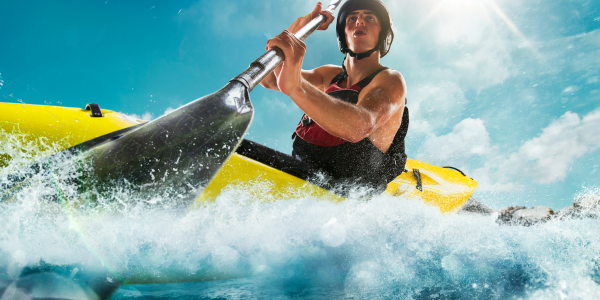
In addition to burning calories, kayaking can offer several other health benefits.
It can help reduce stress and improve your mood by allowing you to enjoy nature and get some fresh air and sunshine. Trust me, it’s one of my favorite pastimes: go kayaking without an agenda in mind.
Kayaking can also improve your balance and coordination, as it requires you to use your core muscles to stabilize your body while paddling.
Is Kayaking Good for Losing Belly Fat?
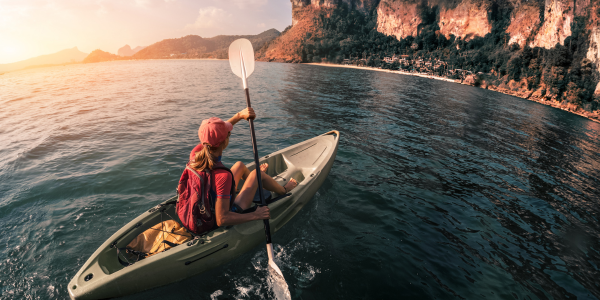
Kayaking can be a great way to burn calories and get in shape including losing belly fat; however, it also depends on your diet.
To reduce your stomach size, you’ll need to focus on losing weight overall by eating a healthy diet and getting regular physical activity.
Kayaking can definitely be a part of an overall fitness routine that includes strength and cardiovascular exercises as well as proper nutrition. But if you eat unhealthy meals majority of the week and think kayaking can counteract that, that’s a losing battle.
Is Kayaking Cardio or Strength?

Kayaking is both a cardiovascular and strength-building exercise. It can help you improve your endurance while also strengthening your arms, shoulders, back, and abs.
When paddling at a higher intensity or incorporating interval training into your kayaking routine, it can be an effective way to burn calories and get your heart rate up.
However, if you want to build muscle mass, you’ll need to incorporate other strength-training exercises into your routine.
What Cardio is Best for Kayaking?
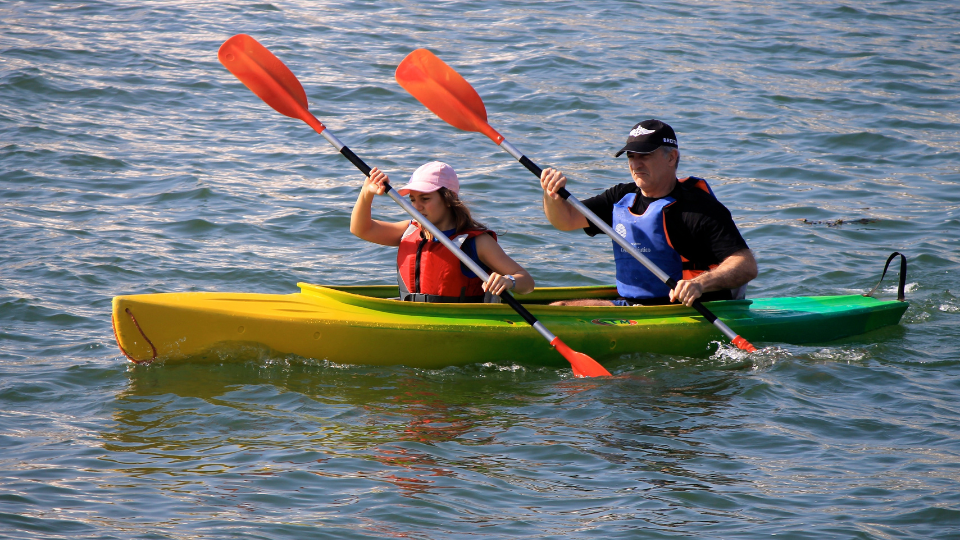
A cardiovascular exercise that is great for kayaking is interval training.
This involves alternating between periods of high-intensity paddling and low-intensity paddling. This can help you build endurance and burn more calories while also giving your muscles a break.
Other good cardio exercises for kayaking include rowing, cycling, running, skipping rope, and jumping jacks.
Does Kayaking Build Abs?
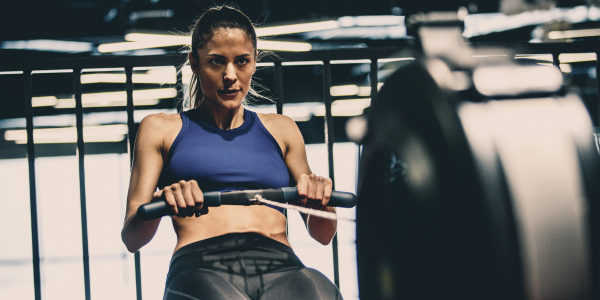
Yes, kayaking can help you build your abs. When paddling through the water, you’re using your core muscles to stabilize and power your body. This will engage and strengthen your abdominal muscles over time.
You can also work on building up your ab strength by incorporating specific exercises into your kayaking routine, such as crunches or planks.
How Do You Get in Shape for Kayaking?

If you want to get in shape for kayaking, it’s important to focus on building overall strength and endurance.
Start by incorporating aerobic exercises into your routine, such as running or cycling. You can also use resistance training to build up your upper body muscles, which will help you paddle more efficiently.
Other good ways to prepare for kayaking include stretching regularly and practicing balance exercises, such as yoga or tai chi.
It wasn’t until I started doing HIIT exercises the majority of the week that I started feeling more comfortable kayaking.
Does Kayaking Help You Lose Weight?
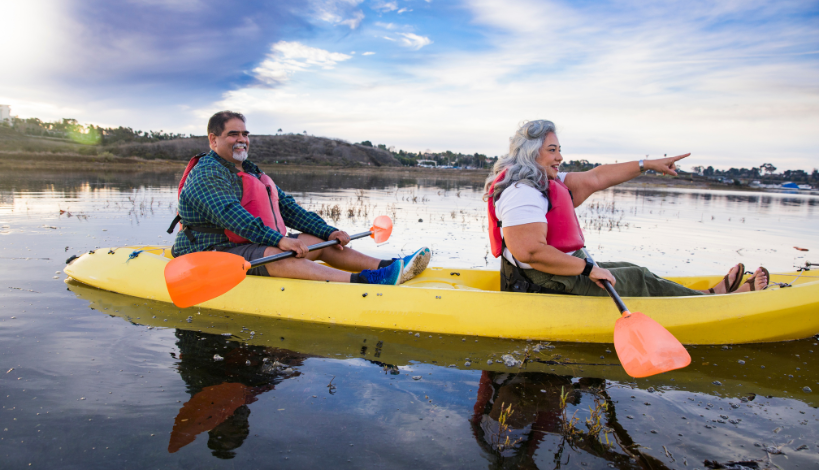
Yes, kayaking can help you lose weight by burning calories.
Depending on your weight and intensity of paddling, as mentioned earlier, you can burn anywhere from 250-400 calories in an hour of kayaking.
To further increase the calorie-burning potential of this activity, try varying your routes and mixing up your workouts with interval training and other cardio exercises.
Summary
Kayaking is one of the most fun and rewarding activities I do and it also has several health benefits, including calorie burning, strength building, and improved cardiovascular fitness.
By incorporating kayaking into your workout routine, you can get fit while enjoying the beauty of nature. Just be sure to take the appropriate precautions and remember to have fun!
